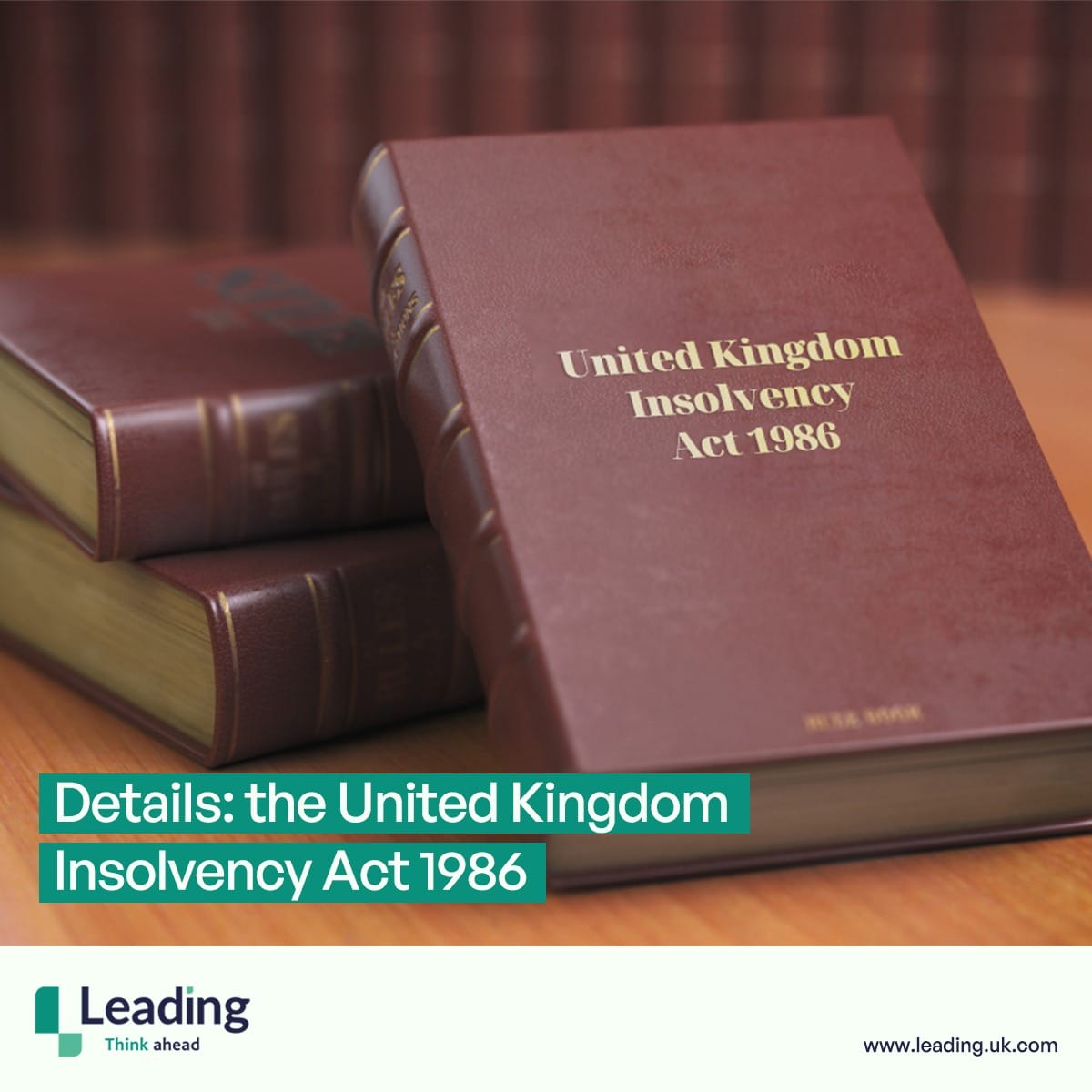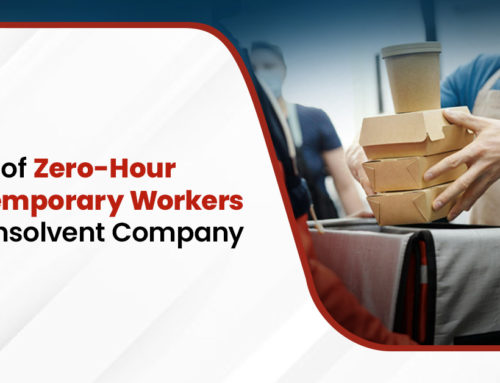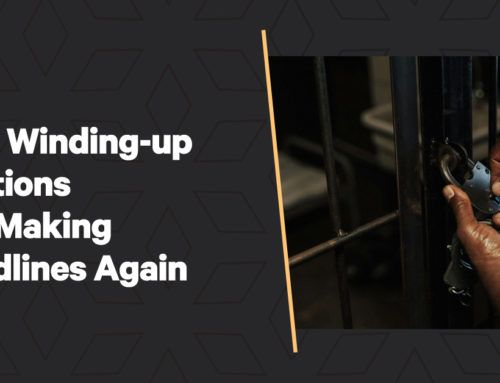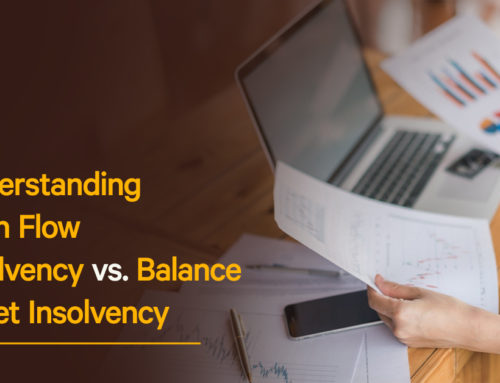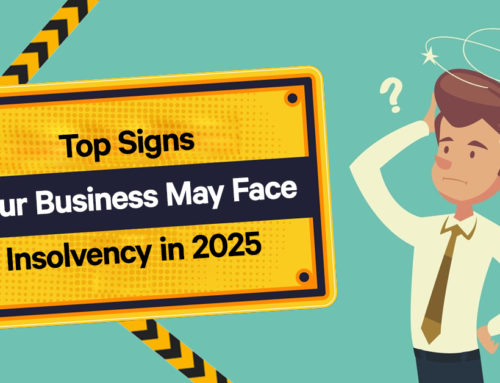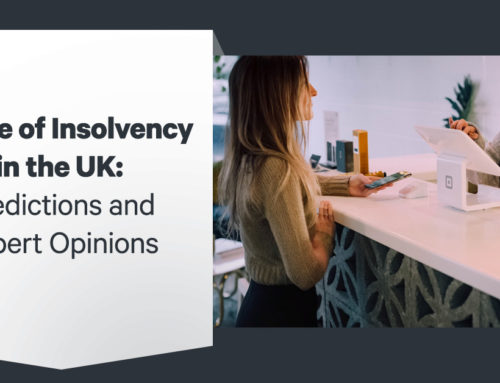The Insolvency Act 1986 was as law after the Cork Review Committee’s report on Insolvency Law and Practice in 1982. Prior to the report, insolvency issues were dealt with under as many as 50 different Acts of Parliament, such as the Bankruptcy Act 1914, the Companies Act 1948, the Deeds of Arrangement Act 1914 and the County Courts Act 1959.
However, there were certain issues that arose, such as floating charges and title clauses, which were not covered by existing Acts in the 18th and 19th centuries. The report stated that “there was no comprehensive statement of the law of insolvency in England and Wales.” So, the framework of insolvency law that addressed a corporate debtor and an individual debtor as separate issues was established, creating a more flexible system that also included voluntary arrangements. The Insolvency Act 1986 made a number of changes to insolvency law and was adopted in England and Wales.
The Insolvency Act 1986 – its current form
Today, the United Kingdom Insolvency Act 1986 is the legal platform for all corporate and individual insolvency procedures. There are around 1,570 insolvency practitioners currently registered, qualified and authorised to act on behalf of companies and individuals in dealing with insolvency procedures, as laid out by the Act.
The monitoring and regulation of insolvency practitioners (IPs) is conducted by four professional bodies. Known collectively as the RPBs, they are:
- The Insolvency Practitioners Association;
- The Institute of Chartered Accountants in England and Wales;
- The Institute of Chartered Accountants of Scotland; and
- The Institute of Chartered Accountants in Ireland.
The RPBs are instructed by the Secretary of State at the Department of Business, Energy & Industrial Strategy as part of The Insolvency Service, which also acts as an overall regulator. It is the job of the RPBs to ensure that IPs manage insolvency procedures in accordance with the Insolvency Act 1986 as well as regulatory requirements set by the Small Business Enterprise & Employment Act 2015 with the aim to make sure every case receives fair treatment, high quality services, transparency and services at a reasonable cost, as well as being treated with consistency and integrity.
What does the Insolvency Act 1986 cover?
The United Kingdom Insolvency Act 1986 is broken down into sections, or Parts, each of which covers a different aspect of insolvency, such as company insolvency, individual insolvency and other matters relating to personal and corporate insolvency practices. Here is an overview of each section.
Company insolvency
- Part I covers Company Voluntary Arrangements (CVAs) where an insolvent company can enter into an agreed voluntary arrangement to pay back their debt to a creditor, or creditors, at a specified monthly sum over an agreed period of time. To enter a CVA, its procedure must be agreed by all parties and the IP manages the payments throughout the CVA period.
- Part II covers company administration, which is an insolvent process handled by the instructed IP, or an Considered more of a rescue package, the IP/administrator seeks a buyer for the insolvent company or the assets of the company are sold off, either way clearing the debt. The advantage of administration is that the insolvent company can still trade.
- Part III covers receivership whereby the court appoints an official receiver to manage the insolvent company who either sells the company as a whole or sells off the assets to pay back creditors.
- Part VI handles the winding up of limited companies that are registered according to the Companies Act. Winding up a company is a formal liquidation process that closes down a company. There are several ways to wind up a company including company voluntary liquidation (CVL), member’s voluntary liquidation (MVL) (this is usually closing down a solvent company) and creditors’ voluntary winding up (also known as compulsory liquidation). It also sets out the appointment of liquidators, the dissolution of companies after liquidation, as well as an IP’s investigation into the company director’s practice.
- Part V manages the winding up of unregistered companies.
- Part VI applies to any miscellaneous provisions that are attributable to insolvent companies or those in a liquidation process.
- Part VII is guidance on how to interpret the preceding parts.
Individual insolvency (bankruptcy)
- Part VIII involves individual voluntary arrangements (IVAs) whereby individuals come to a mutually agreed arrangement to pay back their creditors through monthly payments over a set period of time
- Part IX deals with individual bankruptcy. This part is broken down into seven chapters:
- Chapter I – bankruptcy petitions and orders.
- Chapter II – protection of the bankrupt’s estate and investigation into his affairs.
- Chapter III – trustees in bankruptcy.
- Chapter IV – administration by trustees.
- Chapter V – how bankruptcy affects the bankrupt person.
- Chapter VI – bankruptcy offences.
- Chapter VII – the court’s powers in bankruptcy.
- Part X involves the general provisions regarding individual insolvency.
- Part XI gives guidance on how to interpret the individual insolvency Parts.
Miscellaneous matters
- Part XII deals with preferential debts in the company and individual insolvency.
- Part XIII involves the role of insolvency practitioners and their qualifications.
- Part XIV is about public administration.
- Part XV manages subordinate legislation.
- Part XVI details the provisions against debt avoidance (England and Wales only).
- Part XVII covers any other miscellaneous and general matters.
- Part XVIII gives guidance on the interpretation of miscellaneous matters.
- Part XIX accounts for any other final provisions not listed in the previous Parts.
Schedules
- Schedule B1 was incorporated when the new administration procedure was established as part of the Enterprise Act 2002.
“The future of insolvency regulation” consultation 2022
In 2020, due to the Covid-19 pandemic, the government introduced a series of temporary amendments to the Insolvency Act 1986 in order to protect businesses and individuals from the financial impact of the pandemic.
However, as the UK emerges from the pandemic, it highlighted the fact that the current framework of the Insolvency Act 1986 was considered ‘not fit for purpose’ in a number of areas. Therefore, The Insolvency Service issued a consultation into insolvency reforms, with final responses to have been received by 25th March 2022.
If you are struggling with personal debt and unsure what the right route is to deal with your creditors, the first step is to seek professional advice. Our highly experienced professionals at Leading are on hand to help with advice on managing personal and professional insolvency matters. Contact us today and discover how we can help you.

